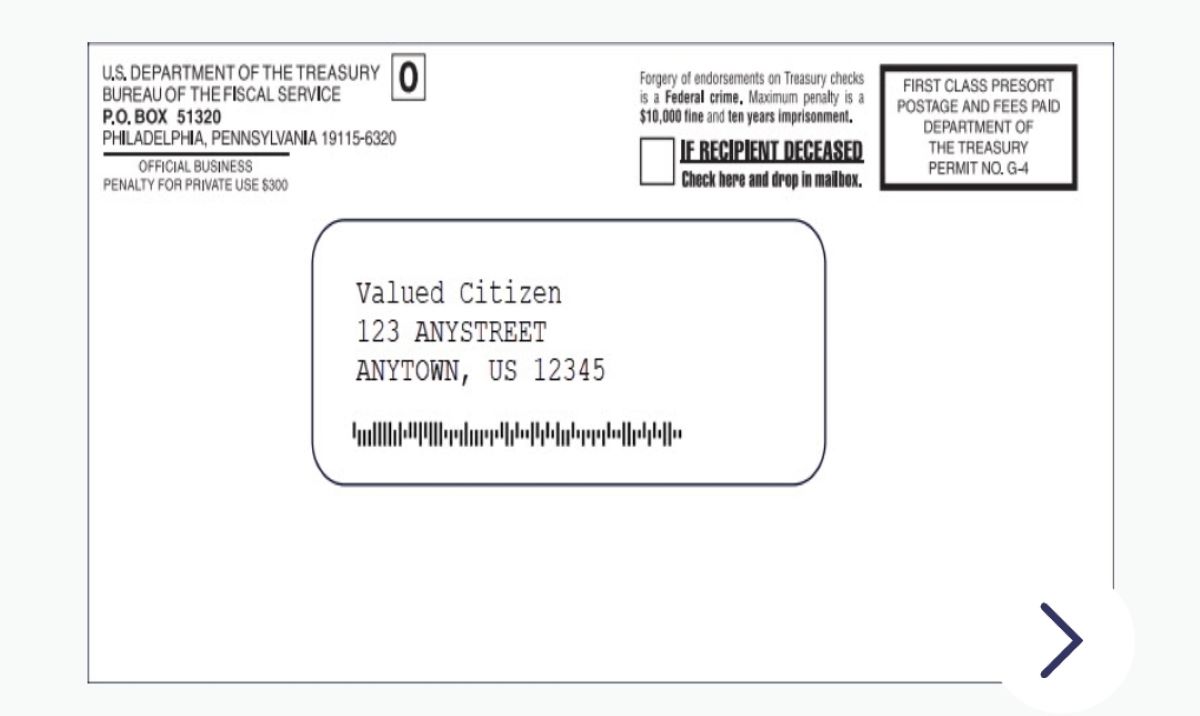

Finance
What Is VWAP In Stocks
Published: January 18, 2024
Learn about VWAP in stocks and how it impacts your finance. Gain insight into this commonly used trading indicator and improve your investment strategies.
(Many of the links in this article redirect to a specific reviewed product. Your purchase of these products through affiliate links helps to generate commission for LiveWell, at no extra cost. Learn more)
Table of Contents
Introduction
Welcome to the world of stocks! If you’re new to the stock market, you might have come across the term “VWAP” and wondered what it means. Well, you’re in the right place. In this article, we’ll explore the concept of VWAP in stocks and its significance in trading strategies.
VWAP stands for Volume Weighted Average Price. It is a trading indicator that helps investors and traders understand the average price at which a particular stock has been traded throughout the day. VWAP takes into account both the volume of trades and the corresponding prices, making it a valuable tool in analyzing stock movements.
As an investor or trader, understanding VWAP is crucial because it provides insights into the price levels at which significant trading activity has occurred. By comparing the current price of a stock to its VWAP, traders can gauge whether the stock is trading above or below its average traded price.
In the next section, we’ll delve into the calculation of VWAP and the mathematical formula behind it.
Definition of VWAP
VWAP, or Volume Weighted Average Price, is a trading indicator that calculates the average price at which a specific stock has been traded throughout the day, taking into account both the volume of trades and their corresponding prices. It is used by traders, especially institutional investors, to determine the fair value of a stock and identify trading opportunities.
The VWAP calculation emphasizes the importance of volume in determining the average price. It weighs each trade’s price by the volume of shares traded at that price, giving higher significance to trades with higher volumes. The resulting VWAP value provides a benchmark for evaluating whether the current stock price is trading above or below the average price based on volume.
VWAP is often used in conjunction with other technical analysis tools or indicators to validate potential trade setups. By comparing the current price to its VWAP, traders can identify trends and gauge the overall sentiment of market participants.
It’s important to note that VWAP is a dynamic indicator that is recalculated throughout the trading day as new trades occur. The value of VWAP can vary depending on the time frame considered, such as the entire trading day or a specific interval.
Now that we understand the definition of VWAP, let’s move on to the next section, where we’ll dive into the calculation of VWAP and how it is derived.
Calculation of VWAP
The calculation of VWAP involves two main components: the volume of trades and their corresponding prices. To calculate VWAP, you need to multiply the volume of each trade by its price, sum up these values, and divide the result by the total volume.
The formula for calculating VWAP is as follows:
VWAP = (Sum of (Volume * Price)) / Total Volume
Let’s break down the steps involved in calculating VWAP:
- For each trade, multiply the volume of shares traded by the price at which the trade occurred.
- Sum up the values obtained in the previous step for all the trades throughout the trading day.
- Divide the sum by the total volume of shares traded during the day.
By following these steps, you will arrive at the VWAP value, which represents the average price at which the stock has been traded, weighted by volume.
It’s important to note that VWAP is typically calculated using intraday data, meaning it considers trades that occurred during the trading day. However, traders can choose to calculate VWAP based on different time frames, such as hourly or even minute intervals, depending on their trading strategies and goals.
Now that we’ve covered the calculation of VWAP, let’s proceed to the next section, where we’ll explore the importance of VWAP in stocks.
Importance of VWAP in Stocks
VWAP, or Volume Weighted Average Price, holds significant importance in the world of stocks and is widely used by traders and investors. Let’s explore why VWAP is considered an essential tool in analyzing stock movements and making informed trading decisions.
- Identifying fair value: VWAP provides traders with a benchmark to determine the fair value of a stock based on the volume-weighted average price. By comparing the current price of a stock to its VWAP, traders can assess whether it is overvalued or undervalued in relation to its average traded price.
- Spotting trends and market sentiment: VWAP helps traders identify market trends and sentiment. If a stock price consistently trades above the VWAP, it indicates bullish sentiment, while trading below the VWAP may suggest bearish sentiment. Traders can use this information to align their trading strategies accordingly.
- Support and resistance levels: VWAP can act as a support or resistance level for a stock. Traders often observe how the stock price reacts when it approaches or crosses the VWAP. If the stock consistently bounces off the VWAP, it can be considered a support level, while breaking above or below the VWAP could indicate a change in trend.
- Execution of trades: Institutional investors use VWAP as a benchmark to guide the execution of large orders. By breaking down their order into smaller trades over time and executing them in line with the VWAP, market impact can be minimized, ensuring a more favorable average price for the order.
- Confirmation of price moves: VWAP can provide confirmation of price moves and breakouts. If a stock breaks out above its VWAP with high volume, it suggests a potential bullish move. Conversely, a break below the VWAP with high volume may indicate bearish pressure.
Overall, VWAP is a powerful tool that helps traders understand the fair value of a stock, spot trends and sentiment, identify support and resistance levels, execute trades efficiently, and confirm price moves. Incorporating VWAP into your trading strategy can provide valuable insights and improve your overall trading performance.
Now that we’ve explored the importance of VWAP, let’s move on to the next section, where we’ll dive into various VWAP trading strategies.
Understanding VWAP Trading Strategies
VWAP, or Volume Weighted Average Price, can be utilized in various trading strategies to assist traders in making informed decisions. Let’s explore some common VWAP trading strategies that traders employ to take advantage of market trends and optimize their trading outcomes.
- VWAP Reversal: This strategy involves identifying price reversals around the VWAP. Traders look for stocks that have temporarily deviated from the VWAP due to overbought or oversold conditions. When the stock price reverts back towards the VWAP, traders may take positions expecting the price to reverse and move back in line with the average.
- VWAP Breakout: In this strategy, traders monitor the VWAP to identify potential breakouts. A breakout occurs when the stock price crosses above or below the VWAP with increased volume, indicating a potential trend continuation. Traders may enter positions when the stock price breaks out of the VWAP, anticipating a strong price movement in the direction of the breakout.
- VWAP Crossovers: Traders employing this strategy focus on the interaction between the stock price and the VWAP. When the stock price crosses above the VWAP from below, it may signal a bullish shift. Conversely, when the stock price crosses below the VWAP from above, it may suggest a bearish shift. Traders may enter positions based on these crossovers, expecting the price to follow the direction implied by the crossover.
- VWAP as Support or Resistance: Another strategy involves using the VWAP as a support or resistance level. Traders observe how the stock price reacts when it approaches or touches the VWAP. If the stock consistently bounces off the VWAP, it can serve as a support level, leading traders to look for buying opportunities. On the other hand, if the stock consistently fails to break above the VWAP, it can act as a resistance level, triggering potential selling opportunities.
- VWAP Scalping: This strategy involves taking advantage of short-term price fluctuations around the VWAP. Traders aim to capture small gains by entering and exiting trades quickly as the stock price oscillates around the VWAP. The goal is to profit from multiple small moves rather than waiting for a significant price swing.
These are just a few examples of how VWAP can be integrated into trading strategies. Traders often combine the use of VWAP with other technical analysis tools, such as moving averages, trendlines, and oscillators, to enhance their trading decisions.
It’s important to note that no single strategy works universally in all market conditions. Traders should adapt their approach based on the current market environment and constantly evaluate the effectiveness of their chosen VWAP trading strategy.
Now that we’ve explored various VWAP trading strategies, let’s move on to the next section, where we’ll discuss the limitations of VWAP in stocks.
Limitations of VWAP in Stocks
While VWAP, or Volume Weighted Average Price, is a valuable tool for analyzing stock movements, it is important to be aware of its limitations. Understanding these limitations can help traders better interpret the information provided by VWAP and avoid potential pitfalls. Let’s explore some of the limitations of VWAP in stocks:
- Delayed execution: VWAP is a lagging indicator that relies on historical data. This means that it may not reflect real-time market conditions, resulting in delayed execution for traders who solely rely on VWAP for their trading decisions.
- Price distortions: VWAP can be influenced by extreme price movements or outliers when calculating the average price. This can skew the VWAP value, giving an inaccurate representation of the stock’s average traded price.
- Volume dependency: VWAP heavily relies on trading volume to calculate the average price. Stocks with low trading volume may have less reliable VWAP values, as a few large trades can significantly impact the average price.
- Intraday focus: VWAP is primarily used for intraday trading strategies and may be less effective for longer-term timeframes. Traders who are looking to analyze stock trends beyond the trading day may need to incorporate additional indicators or tools.
- Market volatility: In highly volatile market conditions, VWAP may be less reliable as it struggles to accurately represent the average traded price. Extreme price swings and sudden changes in volume can distort the interpretation of VWAP.
- Market manipulation: In rare instances, market manipulators may intentionally trade large volumes at specific prices to manipulate the VWAP. This can mislead traders who rely solely on VWAP as an indicator of fair value.
These limitations remind us that VWAP should be used as a part of a comprehensive trading strategy rather than as the sole determinant of trading decisions. Traders should consider combining VWAP with other technical indicators, fundamental analysis, and market observations to make well-rounded trading choices.
Now that we’ve discussed the limitations of VWAP, let’s move on to the concluding section where we’ll summarize the key points of this article.
Conclusion
VWAP, or Volume Weighted Average Price, is a powerful trading indicator that provides valuable insights into the average traded price of a stock based on volume. It offers traders a benchmark to assess fair value, spot trends and sentiment, identify support and resistance levels, and execute trades efficiently. However, it’s important to understand the limitations of VWAP and use it in conjunction with other indicators and analysis techniques.
In this article, we explored the definition of VWAP and how it is calculated using the volume and price of trades. We highlighted the importance of VWAP in determining fair value, spotting trends, and executing trades. Additionally, we discussed various VWAP trading strategies, including reversal, breakout, crossovers, and support/resistance trading. We also mentioned some limitations of VWAP, such as delayed execution, price distortions, and volume dependency.
To fully harness the power of VWAP, it’s essential for traders to adapt their strategies to the current market conditions, combine VWAP with other indicators, and continuously evaluate the effectiveness of their approach.
By understanding VWAP and its applications, traders can enhance their decision-making process, improve their trading performance, and navigate the dynamic world of stocks with greater confidence.
Thank you for joining us on this journey to uncover the intricacies of VWAP in stocks. Happy trading!














